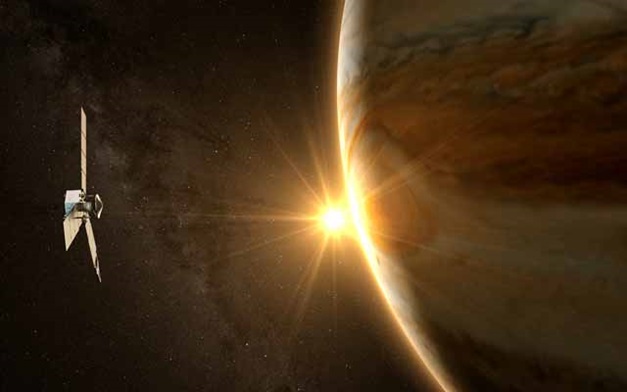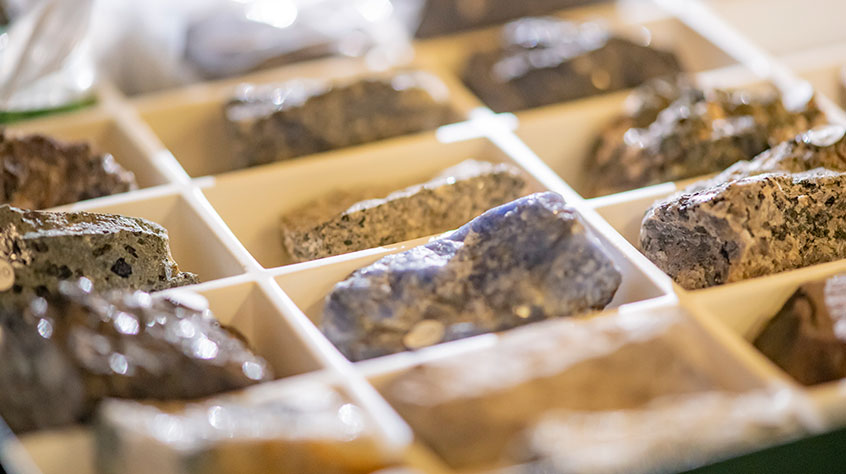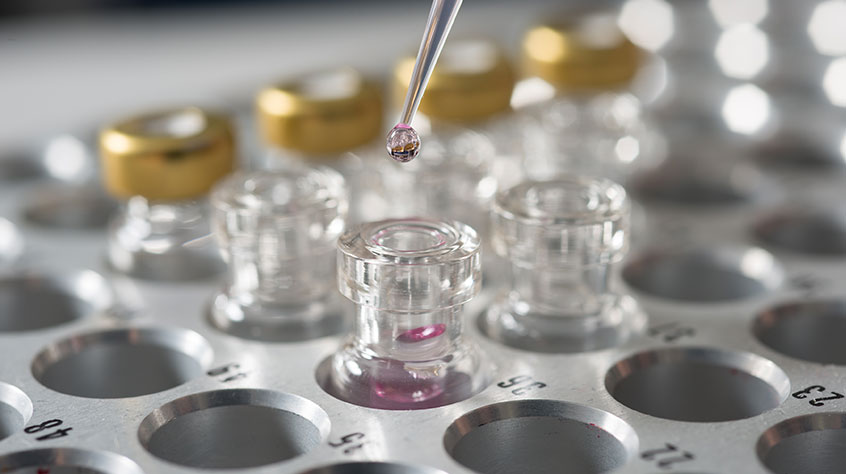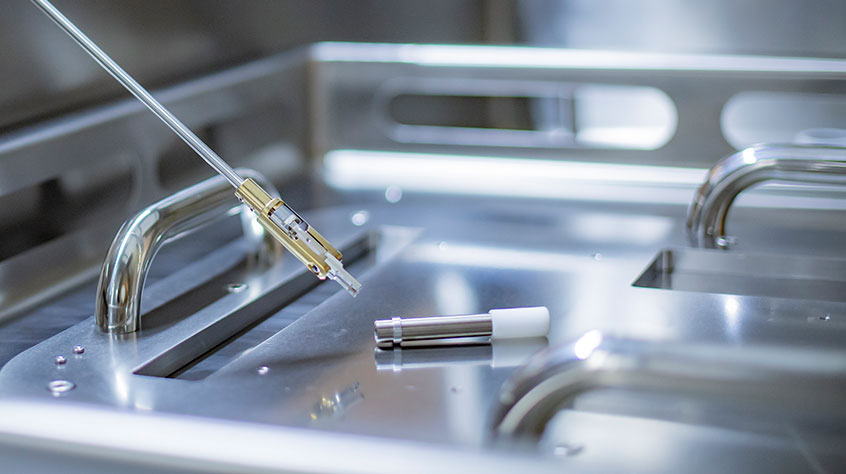Magnetic attraction
"It was 1989, I was 14, and already had a growing interest in maths and science – as a younger child I used to look through my telescope at the night sky and wonder what was out there. NASA’s Voyager mission had successfully made its way through the solar system, and had just flown past Neptune. I turned on the TV and was watching footage of scientists jumping around in excitement at receiving the first close-up images of Neptune that were being sent back from Voyager. It dawned on me that I wanted to do that as a job”.
Professor Emma Bunce, planetary scientist, Head of Physics and Astronomy and President of the Royal Astronomy Society, smiles as she reflects on this.
Fourteen-year-old Emma promptly wrote to NASA asking “How do I get to work at NASA?” To her surprise an envelope from NASA soon arrived through the letterbox, full of leaflets with career advice. Even now, it is clear that this had a huge impact on Professor Bunce.
A few years later, Emma Bunce arrived at the University as an undergraduate student to study Physics with Space Science, and then went on to do a PhD studying the magnetosphere of Jupiter, under the wing of Professor Stan Cowley, now a Fellow of the Royal Society.
“We worked really closely together. Stan was so supportive and very generous with his time. He also gave so many opportunities to his students, lifted you up and pushed you forwards. Stan was a fantastic support.”
Fast forward to the present day, and Professor Bunce's research focuses on planetary exploration and solar system missions.
“A key focus for planetary research is investigating their internal magnetic fields (created deep in the core of the planet) and magnetospheres (the extended space environment around a planet with an internal magnetic field). We want to explore whether other planets have magnetic fields and magnetospheres like Earth, and do they behave in the same way?
“Earth’s magnetic field and magnetosphere are a really important aspect of our environment, as we all live within it – the properties of a planet’s magnetic field and magnetosphere defines whether life can develop and thrive on the surface. The shield of the magnetosphere protects us from harmful solar radiation, and stops our atmosphere from being stripped away.
“Earth’s magnetosphere is very strongly driven by the Sun and its solar wind - a constant stream of plasma that escapes the Sun’s uppermost atmosphere and blows past all of the planets in the solar system, carrying the Sun’s magnetic field with it. The Sun’s magnetic field and solar wind reaches the Earth’s outermost boundary of the magnetosphere where it strongly interacts with the Earth’s magnetic field through a process known as magnetic reconnection. This strong solar driving creates the Northern Lights at high latitudes, also known as the aurora.”
So, is this the case for all planets with magnetic fields? These are the big mysteries that Professor Bunce and her team are looking to solve.
Jupiter’s giant rotating magnetosphere
Over many years, researchers at the University of Leicester had been trying to better understand the mysterious gassy planet Jupiter, which is 11 times the size of the Earth, with an internal magnetic field which is 15 times stronger at the surface.
"Our studies of Jupiter’s magnetic field and magnetosphere led us to understand that Jupiter’s bright auroras were not created in the same way as Earth’s. We found that the combination of a rapidly spinning planet and magnetosphere, and the presence of the volcanic moon Io would lead to a new mechanism to explain Jupiter’s amazing auroral lightshow. As a result of our work, we were invited to join the NASA Juno mission team, and we eagerly anticipated the 2016 arrival of the mission so we could test whether this was the case."
Professor Bunce explains: “Juno is the first spacecraft to orbit Jupiter in a close polar orbit, specifically to answer questions about the gas giant planet’s magnetosphere and aurora, and more broadly about the origins of our solar system. This was the first opportunity to directly measure the electric current system within Jupiter’s magnetosphere, and compare with our modelled expectations.
“We are now using the magnetic field and other datasets from Juno to study the magnetosphere and signatures of the electric current systems which produce the giant planet’s aurora, and we are finding that while Jupiter is throwing us a few curve balls in terms of complexity, our predictions are looking to be pretty good. However, there is still much work to be done on this!”
Time to MIXS it up
Launched in October 2018, BepiColombo is now on its seven-year journey to Mercury. This is a joint mission led by the European Space Agency (ESA) and the Japanese Space Agency (JAXA), and is the first two-spacecraft mission to another planet. The ESA spacecraft will move in a close polar orbit around Mercury studying the details of the planet itself (magnetic field, gravitational field, and surface properties), while the JAXA spacecraft will monitor the extreme and dynamic magnetosphere of the planet from a larger elliptical orbit.
On board BepiColombo is Professor Bunce’s precious cargo – the Mercury Imaging X-ray Spectrometer (MIXS), designed, developed and built by the Space Engineering team at the University. "This instrument is similar to a camera, but captures X-ray images instead of operating at visible wavelengths. It has two elements, which you can think of like camera lenses – a wide angle lens to allow us to get a global view, and a zoom lens which allows us to capture detailed views of individual features on the surface, like impact craters. No-one has sent an imaging X-ray telescope to any planetary body before so this really is ground-breaking science.
“Watching BepiColombo launch, at Europe’s Spaceport in Kourou, French Guiana, was nerve-wracking. We’ve built an instrument and you’re suddenly sending it hundreds of millions miles away.”

This mission is a critical part of the future in planetary exploration, and will be well worth the long wait! Like other missions to the outer solar system, from initial mission idea to return of first data will be 25 years. At the University, we are involved in multiple instruments on the payload and we are looking forward to contributing to the ground-breaking discoveries that the mission promises to deliver.
Professor Bunce is Principal Investigator for MIXS, which means that she leads the international science team, and will be responsible for analysing and interpreting the data that comes back.
When MIXS arrives at Mercury, and goes in to its orbit, it will undergo an initial operations and calibration phase – and that is when the team will find out how the instrument is performing after the long journey. The instrument will measure X-rays generated by the Sun’s interaction with the sunlit surface and will enable Emma and the research team to work out precisely what the surface is made of. It will also be able to measure X-rays from the nightside of the planet which we hope will reveal how the dynamic magnetosphere and charged particles interact directly with the surface.
“We’re talking to MIXS every 6 months, checking in on its ‘health’. This means we are aware of any minor issues that might be occurring (like a software issue for example) and we can fix these from Earth by sending updates or patches. It is normal for there to be some issues when you send a spacecraft off to another planet, and we just hope that none of them are major hardware problems because you cannot just go and fix them! Thankfully, everything is looking good so far and so we continue our work during the cruise, and wait patiently for the start of the mission.”
Future missions
Professor Bunce and the team are now turning to the excitement of future missions, including the ESA Jupiter Icy Moons Explorer (JUICE) which launches in 2022 and will arrive at Jupiter and Ganymede in late 2029.
Work started on this over 10 years ago, where the idea of a new mission to the Jupiter system with a focus on ocean worlds was developed with the European Science Definition Team. With Professor Bunce acting as the Deputy Lead Scientist, the original 'Jupiter Ganymede Orbiter' proposal was submitted to ESA under the first L-Class mission competition, which was selected and later became the JUICE mission in 2012.
The mission is now in the final stages of development before preparing for another nail-biting launch on an Ariane 5 rocket from French Guiana in June 2022. The mission will study the giant planet Jupiter and pay close fly-by visits to Europa, Callisto and Ganymede before being the first spacecraft to enter orbit of an icy moon in the outer solar system. The focus of that orbit at Ganymede is to characterise the moon including revealing details of the suspected global ocean which resides underneath the icy crust. The existence of vast oceans of water underneath the icy surfaces of moons in the outer solar system has unleashed the tantalising possibility of finding evidence for past or even current life beyond our own planet.





